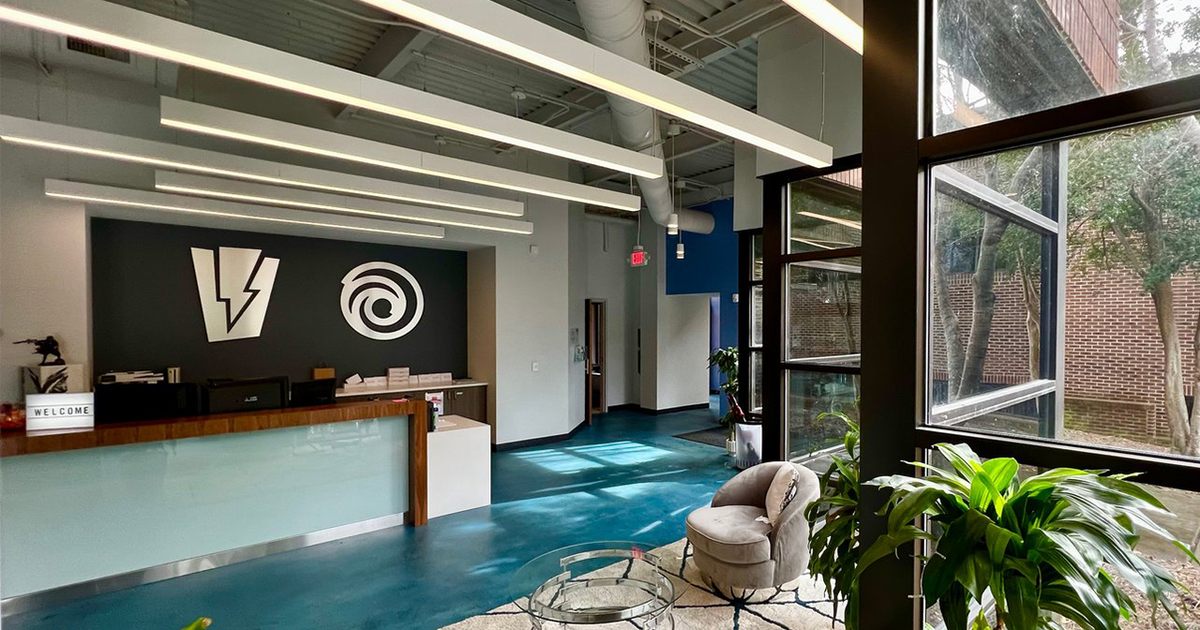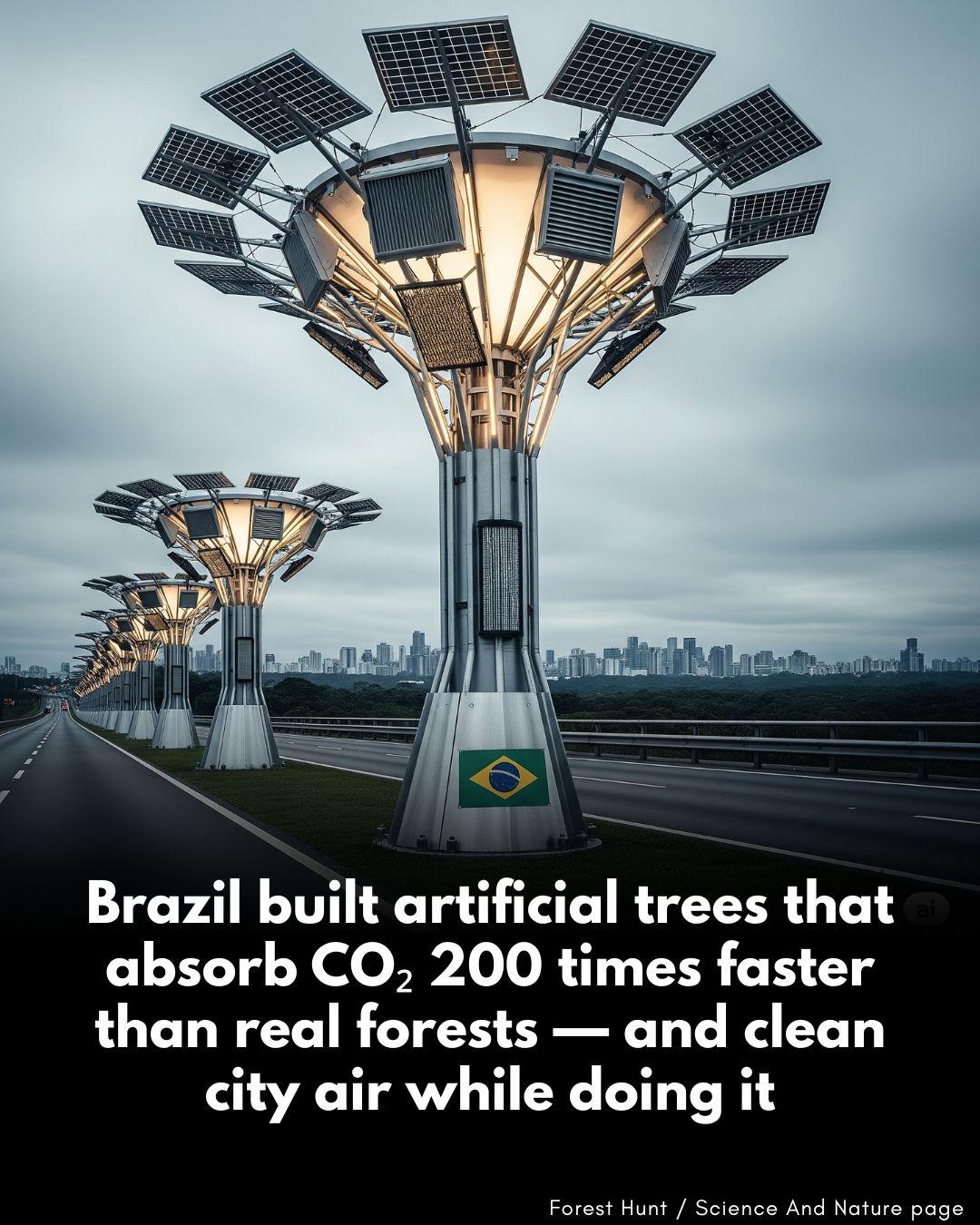Brazil grows artificial trees that pull in 200 times more CO₂ than real ones
In the tropical outskirts of São Paulo, Brazilian climate engineers have begun planting something unusual in the rainforest — artificial trees. Towering columns made from recycled steel and carbon filters, these structures inhale air and extract CO₂ at rates far beyond natural vegetation.
Each tree uses a vertical stack of ion-exchange membranes coated with resin that traps atmospheric carbon. Powered by small solar panels, fans draw air through the structure, and the trapped CO₂ is compressed and stored or used in algae bioreactors nearby.
The device requires no water, no roots, no soil — and yet one unit removes as much carbon as a 200-tree forest. Even better, the system works around the clock, including in cities where natural afforestation isn’t viable.
Brazil is using these trees not to replace nature, but to bridge the gap — filling highways, industrial zones, and heat islands with carbon-hungry columns that operate silently and autonomously. They also release purified air through filtered exhaust.
These artificial trees have another function: data collection. Each one is fitted with climate sensors and satellite uplinks to track air quality, temperature, humidity, and greenhouse gas levels in real time — giving cities a live carbon map of their own neighborhoods.
In the Amazon, the first test zones have seen measurable air quality improvement within weeks. The trees are modular, cheap, and built from recycled shipping containers.
Sometimes the best way to restore nature… is to build it.
@Copyright ForestHunt - Facebook
Brazil grows artificial trees that pull in 200 times more CO₂ than real ones
In the tropical outskirts of São Paulo, Brazilian climate engineers have begun planting something unusual in the rainforest — artificial trees. Towering columns made from recycled steel and carbon filters, these structures inhale air and extract CO₂ at rates far beyond natural vegetation.
Each tree uses a vertical stack of ion-exchange membranes coated with resin that traps atmospheric carbon. Powered by small solar panels, fans draw air through the structure, and the trapped CO₂ is compressed and stored or used in algae bioreactors nearby.
The device requires no water, no roots, no soil — and yet one unit removes as much carbon as a 200-tree forest. Even better, the system works around the clock, including in cities where natural afforestation isn’t viable.
Brazil is using these trees not to replace nature, but to bridge the gap — filling highways, industrial zones, and heat islands with carbon-hungry columns that operate silently and autonomously. They also release purified air through filtered exhaust.
These artificial trees have another function: data collection. Each one is fitted with climate sensors and satellite uplinks to track air quality, temperature, humidity, and greenhouse gas levels in real time — giving cities a live carbon map of their own neighborhoods.
In the Amazon, the first test zones have seen measurable air quality improvement within weeks. The trees are modular, cheap, and built from recycled shipping containers.
Sometimes the best way to restore nature… is to build it.
@Copyright ForestHunt - Facebook













